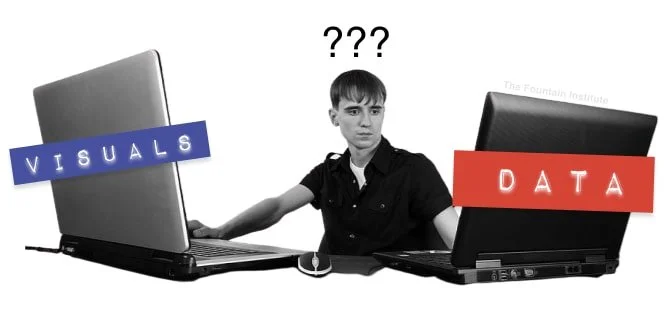How to Use UX Data to Convince Stakeholders
Learn how to talk about your designs like you work at Google
In Google’s meeting rooms, there are two projectors. One is for presenting slides, notes, etc. The other one is for presenting data.
Former Google execs Eric Schmidt & Jonathan Rosenberg, write about how this dual-screen approach at Google promotes fact-based decisions:
We don’t seek to convince by saying, "I think." We convince by saying, "Let me show you."
-Eric Schmidt & Jonathan Rosenberg, authors of How Google Works
If you can learn to say "Let me show you," it will do wonders for your career.
Every time you show a pretty visual in a meeting, you could also show data on customer behavior.
Design can be a very subjective practice, and any objectivity you can bring to the process will be a bonus in the eyes of business people.
How do I show data in the research phase?
When you're just wandering into the fog of a new project, there isn't a lot of data...especially if the project has never been done before.
Some great sources for "Let me show you" might already exist on your company's Google Drive:
Videos of users trying and failing to use your designs (or use Dovetail)
Quotes from past research projects
Reviews for similar products (try ProductHunt)
Bug boards and customer complaints
Notes from stakeholder interviews
This is all qualitative data, and that's just as important as quantitative data, especially in the early stages where there is no quant. data. But if you have analytics, use them!
You can also generate data with customer-facing activities like interviews, a great way to become data-driven in the Problem Space. These create humanizing data to help your stakeholders fall in love with the problem, not the solution.
How do I show data in the design phase?
The answer to this one's a bit trickier. When you're ready to design solutions, it's hard to say "Let me show you" with anything except sketches and designs. How in the world can we find data on the sketches we just created?
Instead of convincing stakeholders with visuals you made, show visuals to customers then share the resulting data with stakeholders. That’s how you can become data-driven in the Solution Space.
Here are some ways to do that:
Conduct a Preference Test
Run a 5-Second test
Make an early prototype and test it with users
It’s an extra step, but it will de-risk your design decisions. That's the premise behind product experimentation. It’s setting things up in a test and letting the customer decide whether it’s a good idea.
What could be more user-centered than that?
So next time you find yourself saying "I think," consider that second screen in the Google office and all the data you could be showing.
This article was originally published in Beyond Aesthetics. Subscribe below:

